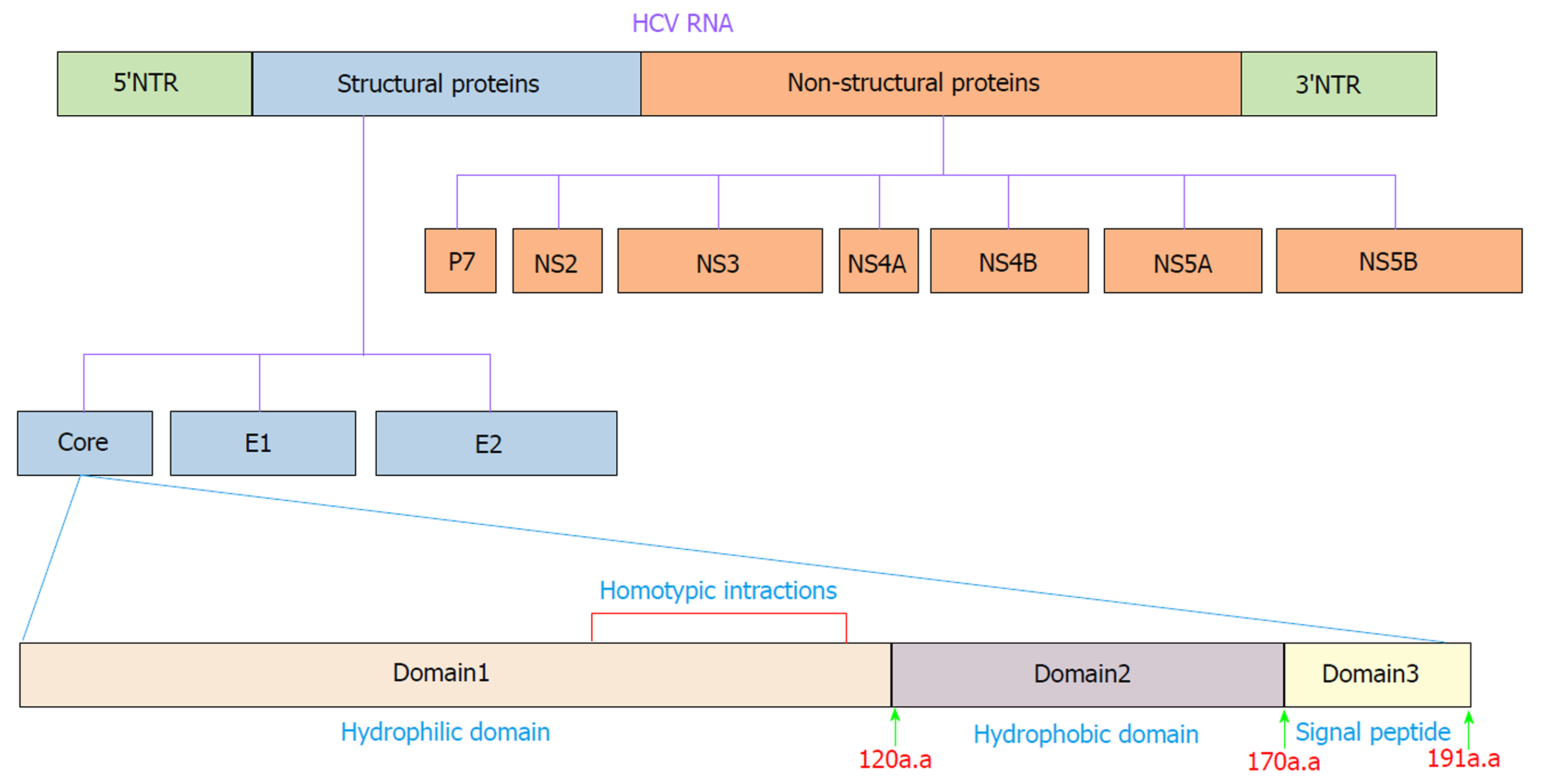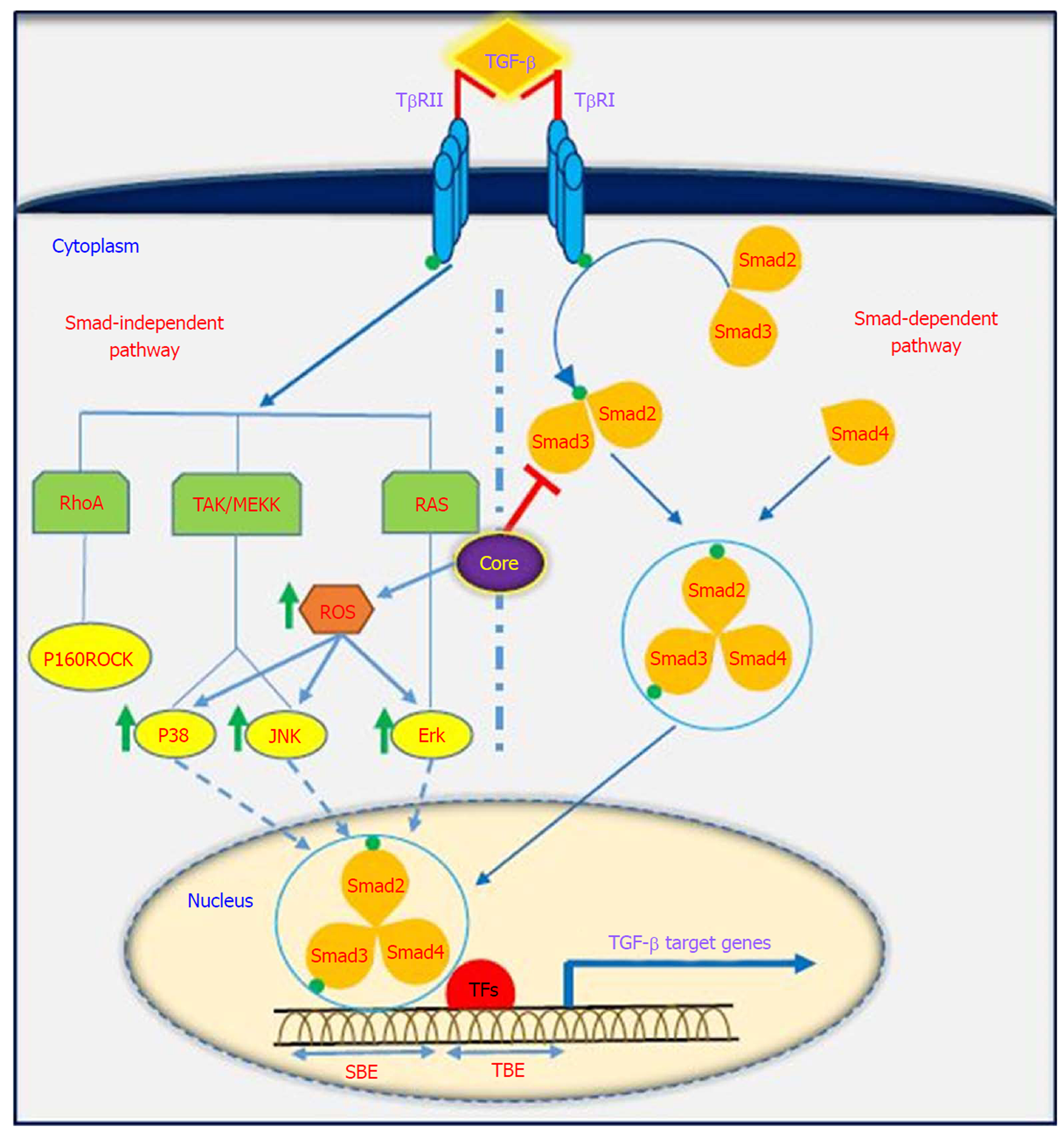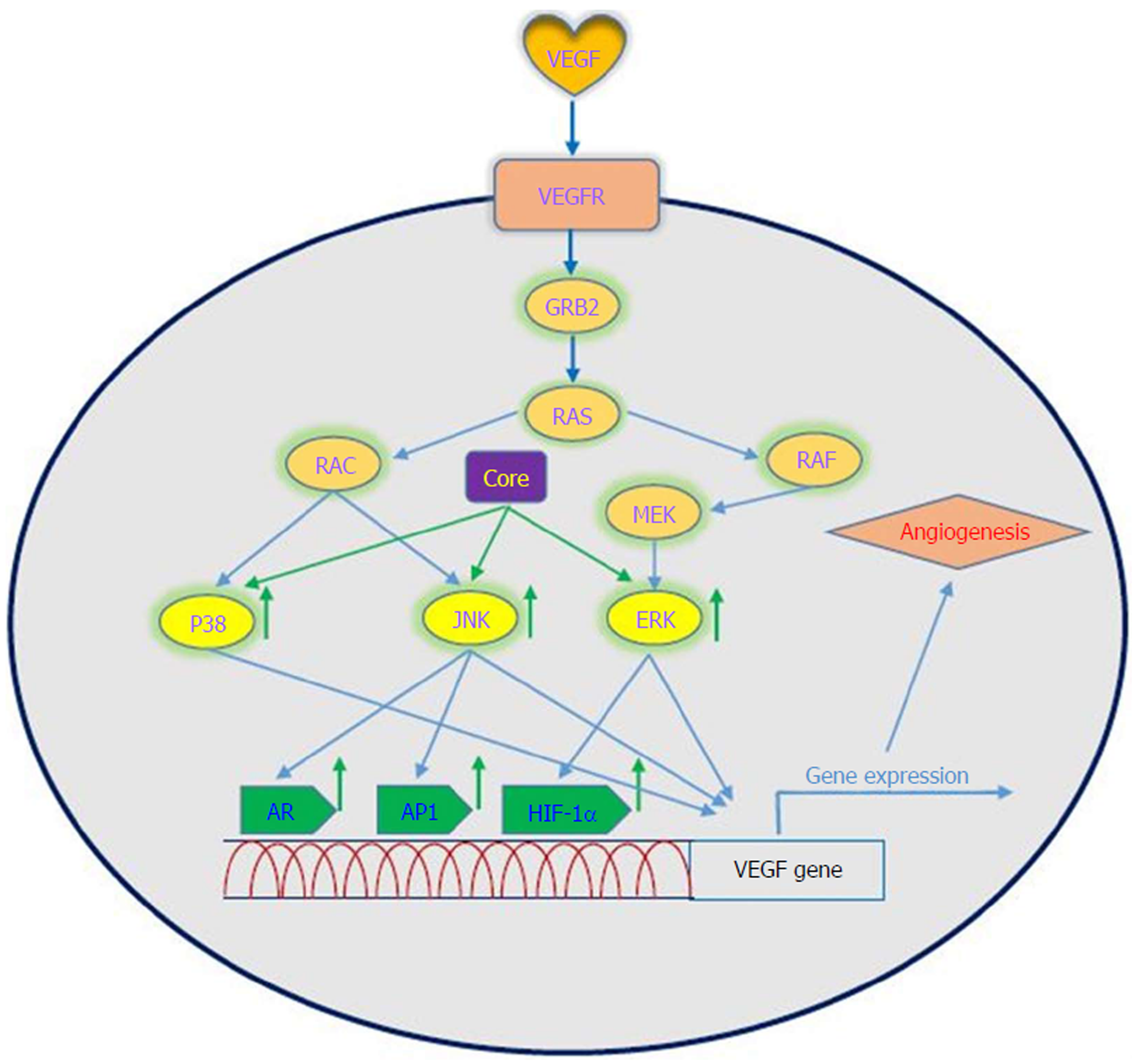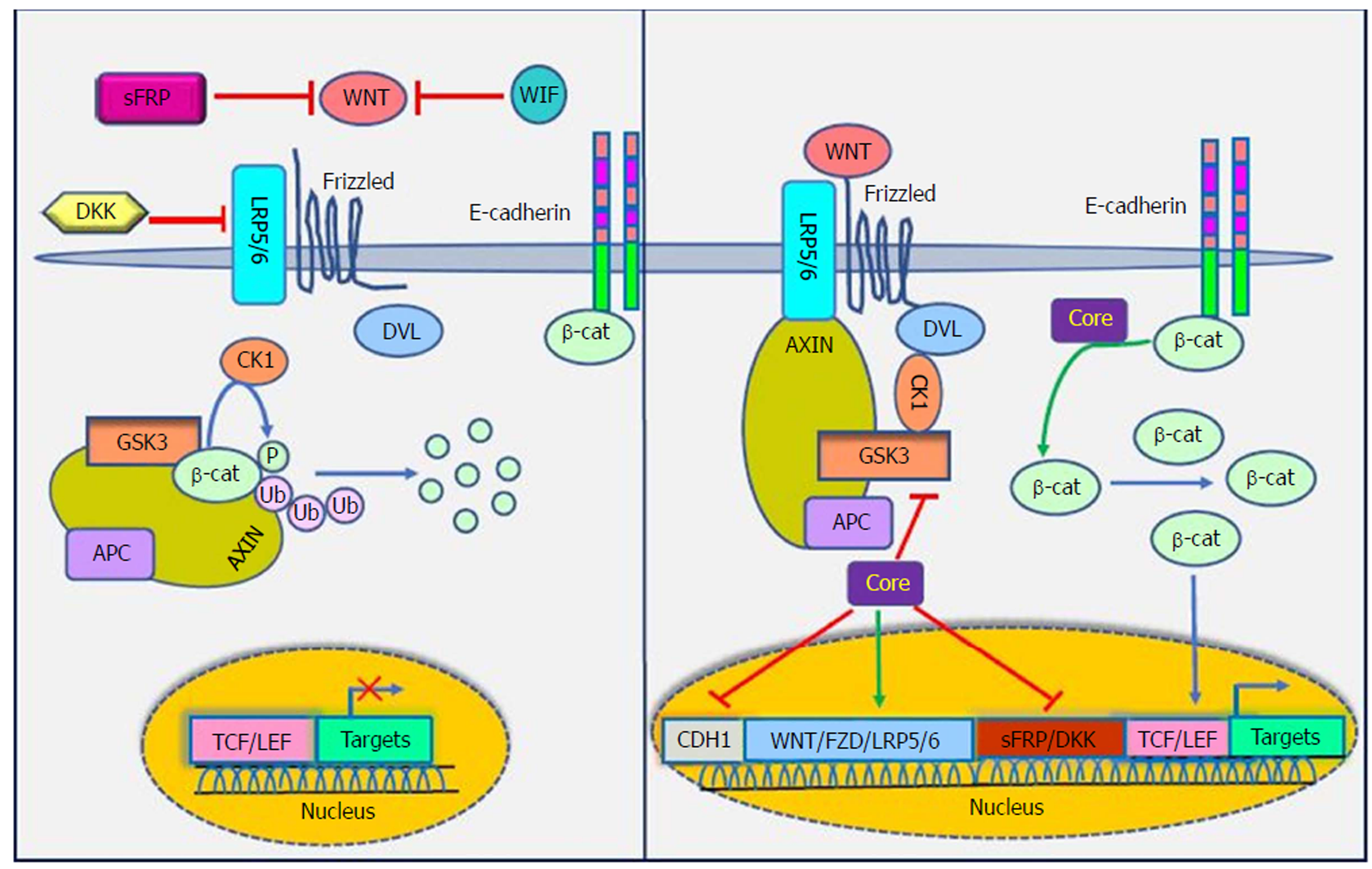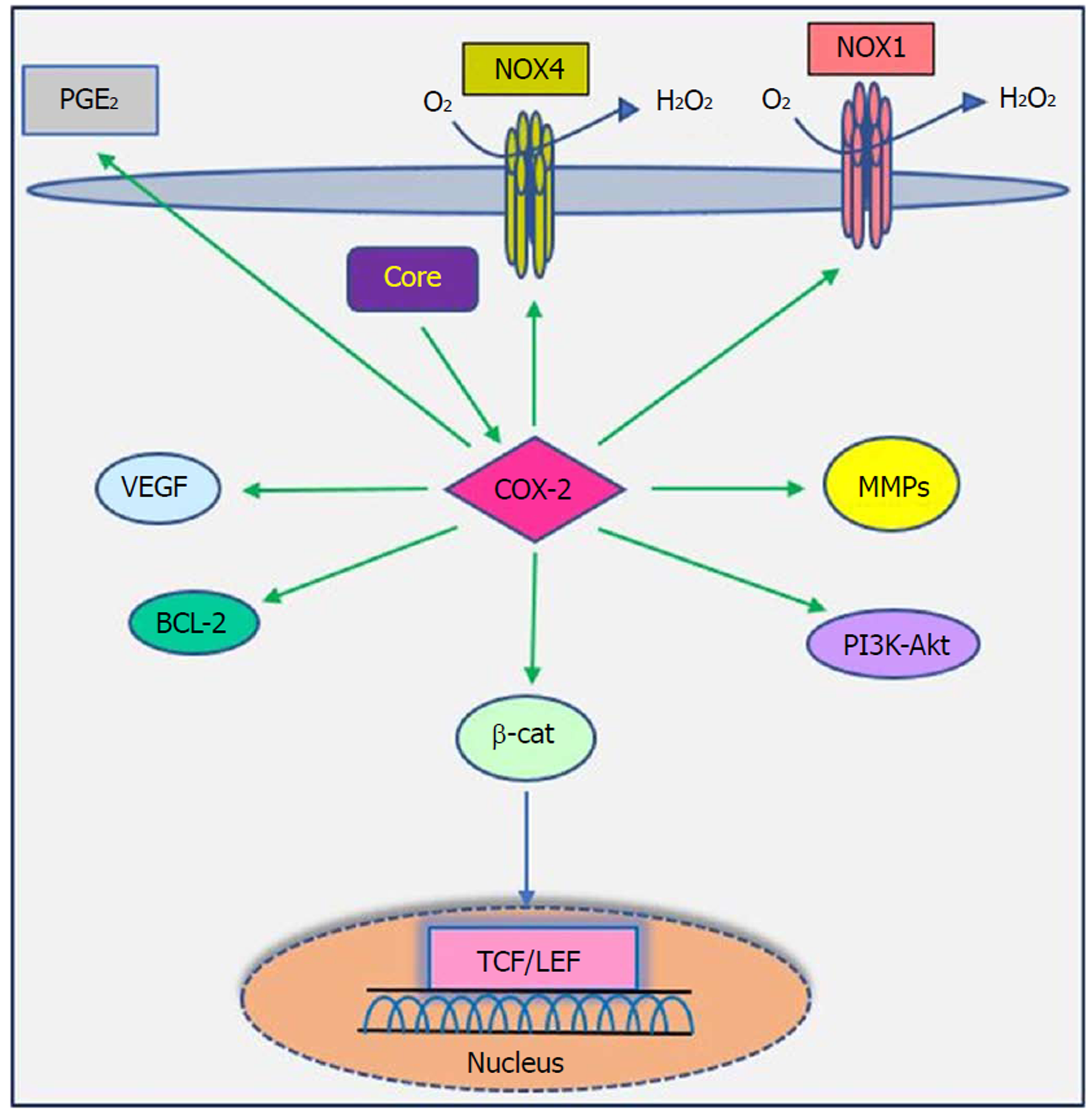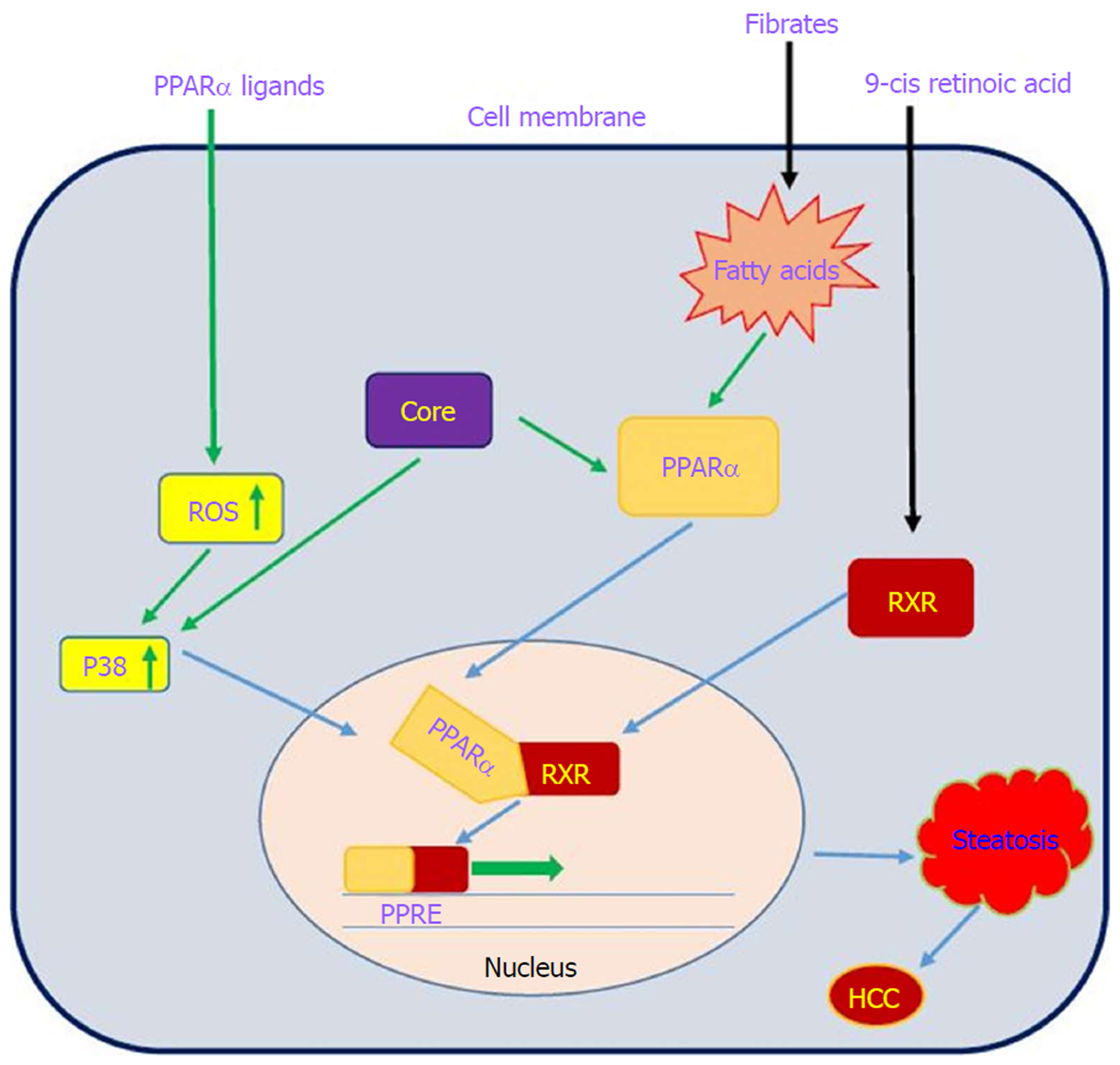Copyright
©The Author(s) 2019.
World J Gastroenterol. Jan 7, 2019; 25(1): 42-58
Published online Jan 7, 2019. doi: 10.3748/wjg.v25.i1.42
Published online Jan 7, 2019. doi: 10.3748/wjg.v25.i1.42
Figure 1 Genome organization of HCV.
Scheme of HCV core protein domains and functional residues. HCV: Hepatitis C virus.
Figure 2 Interaction between the TGF-β signaling pathway and HCV core protein.
TGF-β regulates target gene transcription via canonical (Smad-dependent) and non-canonical (Smad-independent) pathways, and HCV core protein modulates TGF-β signaling pathway in various ways. For detailed information, see text. TGF-β: Transforming growth factor β; HCV: Hepatitis C virus; TβR: TGF-β receptor; ROS: Receptor tyrosine kinase c-ros oncogene 1; TFs: Transcription factors; Smad: Small mothers against decapentaplegic; RhoA: Ras homolog gene family member A; MEKK: Mitogen-activated protein kinase kinase; RAS: Rat sarcoma; ERK: Extracellular signal-regulated kinase; JNKs: Jun N-terminal kinases; P160ROCK: Rho-associated coiled-coil containing protein kinase 1; SBEs: SMAD-binding elements; TBE: T-box binding element.
Figure 3 Interaction between VEGF signaling pathway and HCV core protein.
HCV core protein upregulates VEGF expression mediated by AR, AP1 and HIF-1α. VEGF: Vascular endothelial growth factor; VEGFRs: Vascular endothelial growth factor receptors; GRB2: Growth factor receptor bound protein 2; RAS: Rat sarcoma; RAF: Rapidly accelerated fibrosarcoma; MEK: Mitogen-activated protein kinase kinase; ERK: Extracellular signal-regulated kinase; JNKs: Jun N-terminal kinases; AR: Androgen receptor; AP1: Activator protein 1; HIF-1α: Hypoxia-inducible factor-1 alpha.
Figure 4 Interaction between Wnt/β-catenin signaling pathway and HCV core protein.
HCV core protein increases the expression of Fzd and LRP5/6, decreases the expression of sFRPs and Dickkopf and suppresses the E-cadherin gene promoter. The components shown are explained in more detail in the text. sFRPs: Secreted Frizzled-related proteins; WIF: Wnt inhibitory factor; DKK: Dickkopf WNT signaling pathway inhibitor; LRP5/6: Low-density-lipoprotein-related protein 5/6; Fzd: Frizzled; CDH1: E-cadherin; DVL: Dishevelled segment polarity protein; GSK3: Glycogen synthase kinase 3; CK1: Casein kinase 1; UB: Ubiquitin protein; APC: Adenomatous polyposis coli; TCF/LEF: Transcription factor/lymphoid enhancer-binding factor.
Figure 5 Interaction between COX-2 signaling pathway and HCV core protein.
HCV core protein enhances the expression of COX-2 and increases synthesis of PGs, which in turn lead to hepatocarcinogenesis. For detailed information, see text. COX-2: Cyclooxygenase-2; HCV: Hepatitis C virus; PGs: Prostaglandins; PGE2: Prostaglandins E2; NOX: NADPH oxidase; VEGF: Vascular endothelial growth factor; MMPs: Matrix metalloproteinases; BCL-2: B-cell lymphoma 2; PI3K/AKT: Phosphatidylinositide 3-kinases/serine/threonine-protein kinase; TCF/LEF: Transcription factor/lymphoid enhancer-binding factor.
Figure 6 Interaction between the PPARα signaling pathway and HCV core protein.
HCV core protein can directly and indirectly activate PPARα, and PPARα activation increases liver triglyceride accumulation, leading to hepatic steatosis. See the text for more details. PPARα: Peroxisome proliferator-activated receptor α; ROS: Receptor tyrosine kinase c-ros oncogene 1; RXR: Retinoid X receptor; PPRE: Peroxisome proliferator hormone response elements.
- Citation: Mahmoudvand S, Shokri S, Taherkhani R, Farshadpour F. Hepatitis C virus core protein modulates several signaling pathways involved in hepatocellular carcinoma. World J Gastroenterol 2019; 25(1): 42-58
- URL: https://www.wjgnet.com/1007-9327/full/v25/i1/42.htm
- DOI: https://dx.doi.org/10.3748/wjg.v25.i1.42









